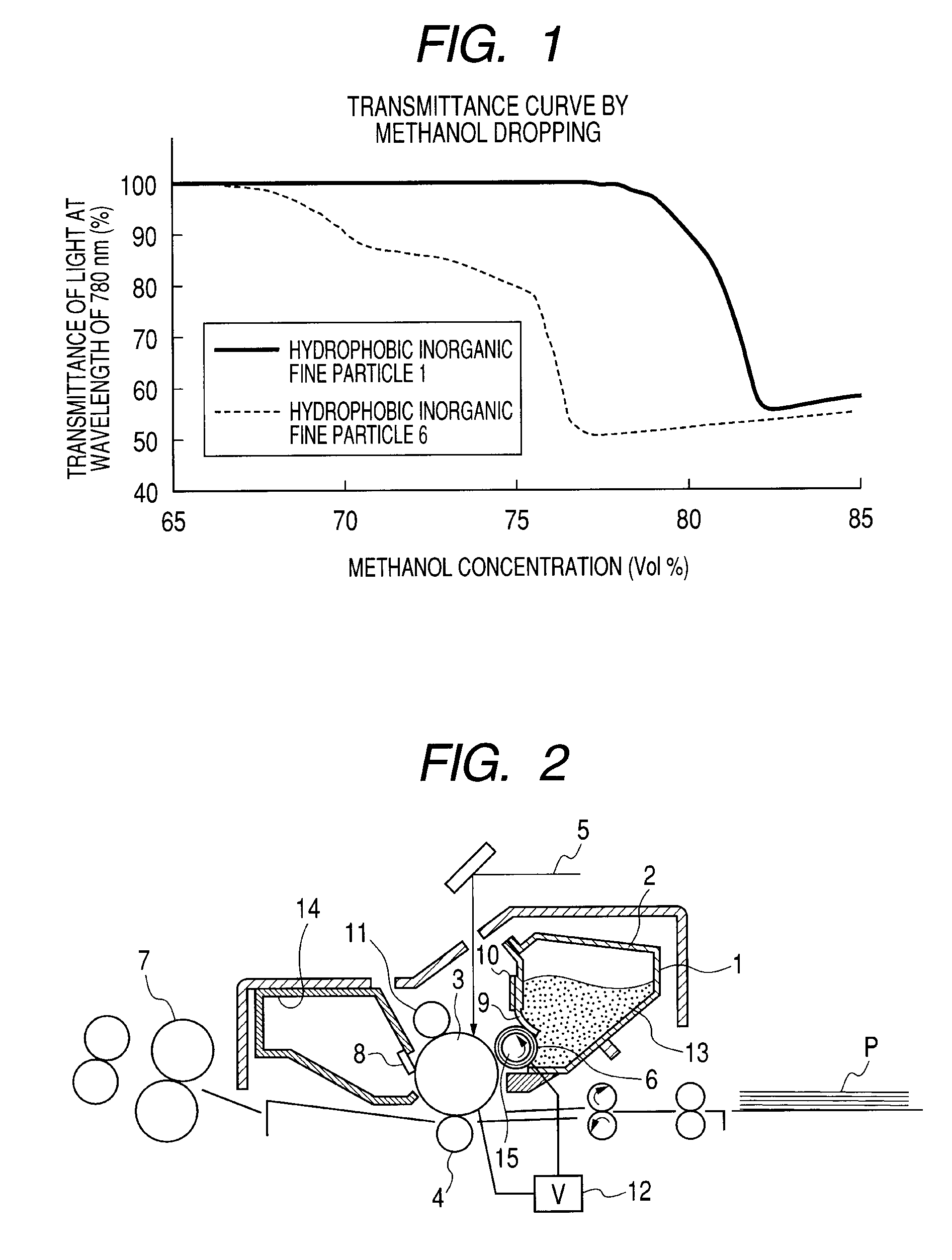Hydrophobic inorganic fine particles and toner
a technology of applied in the field of hydrophobic inorganic fine particles and toners, can solve the problems of large molecular size, inability to impart sufficient hydrophobicity to inorganic fine particles in some cases, and inability to reach adjacent hydrophobic groups, etc., to achieve excellent flowability, excellent charging performance, and suppress melt adhesion
- Summary
- Abstract
- Description
- Claims
- Application Information
AI Technical Summary
Benefits of technology
Problems solved by technology
Method used
Image
Examples
examples
[0269]Hereinafter, the present invention is described specifically by way of examples. However, the present invention is not limited to them in any way.
Hydrophobic Inorganic Fine Particle Production Example 1
[0270]Untreated dry silica (raw silica) (number-average primary particle diameter=12 nm, BET specific surface area 200 m2 / g) was placed in an autoclave provided with a stirrer, and was heated to 250° C. in a fluidized state by stirring.
[0271]The inside of the reactor was replaced with a nitrogen gas, and the reactor was hermetically sealed. Then, 20 parts by mass of dimethyl silicone oil (viscosity=50 mm2 / s) was sprayed onto 100 parts by mass of the raw silica, and the resultant was continuously stirred for 30 minutes. After that, the temperature of the resultant was raised to 300° C. while the resultant was stirred, and then the resultant was stirred for an additional 2 hours, whereby first silicone oil treatment was completed. At this stage, the immobilization ratio of the sil...
examples 1 to 8
[0297]1.0 part by mass of any one of Hydrophobic Inorganic Fine Particles 1 to 8 was externally added to 100 parts by mass of the magnetic toner particles, and was mixed by means of a Henschel mixer, whereby Toners 1 to 8 were obtained.
PUM
| Property | Measurement | Unit |
|---|---|---|
| surface area | aaaaa | aaaaa |
| particle sizes | aaaaa | aaaaa |
| humidity | aaaaa | aaaaa |
Abstract
Description
Claims
Application Information
 Login to View More
Login to View More - R&D
- Intellectual Property
- Life Sciences
- Materials
- Tech Scout
- Unparalleled Data Quality
- Higher Quality Content
- 60% Fewer Hallucinations
Browse by: Latest US Patents, China's latest patents, Technical Efficacy Thesaurus, Application Domain, Technology Topic, Popular Technical Reports.
© 2025 PatSnap. All rights reserved.Legal|Privacy policy|Modern Slavery Act Transparency Statement|Sitemap|About US| Contact US: help@patsnap.com



